Themed collection Editor’s Choice: Perovskite Nanomaterials and Devices

Nanoarchitectures in dye-sensitized solar cells: metal oxides, oxide perovskites and carbon-based materials
Dye-sensitized solar cells (DSSCs) have aroused great interest as a potential renewable energy resource to fulfill the 21st century global energy demand.

Nanoscale, 2018,10, 4987-5034
https://doi.org/10.1039/C7NR08350E
Surface ligand modification of cesium lead bromide nanocrystals for improved light-emitting performance
Ammonium halide facilitated perovskite NC synthesis significantly improves the PLQY and the NC-based light-emitting performances.
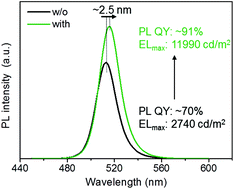
Nanoscale, 2018,10, 4173-4178
https://doi.org/10.1039/C7NR09126E
Templated self-assembly of one-dimensional CsPbX3 perovskite nanocrystal superlattices
A simple kinetic approach to form self-assembled one-dimensional CsPbBr3 perovskite nanocrystal arrays templated inside a pod shaped inert PbSO4 scaffold.
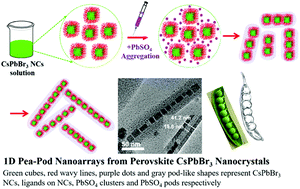
Nanoscale, 2017,9, 17688-17693
https://doi.org/10.1039/C7NR06579E
Wafer-scale reliable switching memory based on 2-dimensional layered organic–inorganic halide perovskite
2D halide perovskite is promising material for reliable waferscale resistive memory even working at high temperature of 87 °C.
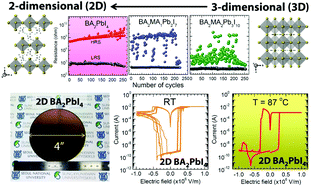
Nanoscale, 2017,9, 15278-15285
https://doi.org/10.1039/C7NR05582J
Highly stable CsPbBr3 quantum dots coated with alkyl phosphate for white light-emitting diodes
A simple strategy to synthesize TDPA coated CsPbBr3 QDs with improved stability and high PLQY.
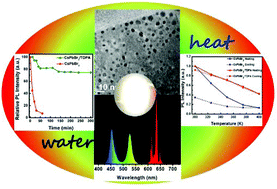
Nanoscale, 2017,9, 15286-15290
https://doi.org/10.1039/C7NR04179A
Solution synthesis and phase control of inorganic perovskites for high-performance optoelectronic devices
Well-crystallized inorganic cesium lead halide perovskites were prepared by an efficient method and applied to photodetectors and perovskite solar cells.

Nanoscale, 2017,9, 11841-11845
https://doi.org/10.1039/C7NR03530F
Stable ultra-fast broad-bandwidth photodetectors based on α-CsPbI3 perovskite and NaYF4:Yb,Er quantum dots
Herein, the fabricated photodetectors based on α-CsPbI3 QDs and NaYF4:Yb,Er QDs exhibit remarkable stability, broad-bandwidth photodetection, and easy fabrication process.
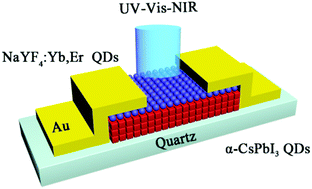
Nanoscale, 2017,9, 6278-6285
https://doi.org/10.1039/C7NR02010D
Atomically thin cesium lead bromide perovskite quantum wires with high luminescence
Atomically thin CsPbBr3 quantum wires with a high quantum yield of 21.13% were demonstrated and understood.
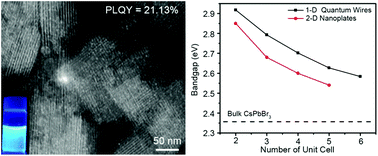
Nanoscale, 2017,9, 104-108
https://doi.org/10.1039/C6NR08250E
Photo-induced dynamic processes in perovskite solar cells: the influence of perovskite composition in the charge extraction and the carrier recombination
We describe how the use of photo-induced charge extraction technique can be useful to study and understand the relationship between perovskite composition, ion reorganization process and solar cell efficiency.
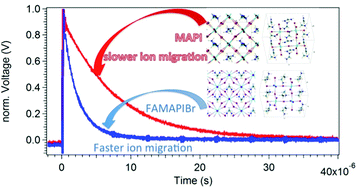
Nanoscale, 2018,10, 6155-6158
https://doi.org/10.1039/C8NR00180D
Rb+ cations enable the change of luminescence properties in perovskite (RbxCs1−xPbBr3) quantum dots
All-inorganic metal halide perovskites of the formulation ABX3 (where A is Cs+, B is commonly Pb2+, and X is a halide, X = Cl, Br, I) have been studied intensively for their unique properties.
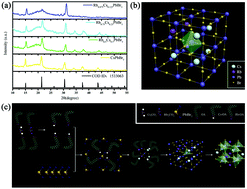
Nanoscale, 2018,10, 3429-3437
https://doi.org/10.1039/C7NR07776A
Spinel Co3O4 nanomaterials for efficient and stable large area carbon-based printed perovskite solar cells
Performance of scalable carbon-based perovskite solar cells (PSCs) is enhanced using a thin interlayer of spinel cobaltite oxide by suppressing charge recombination and enhancing holes extraction.
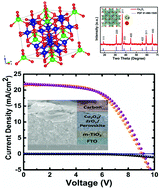
Nanoscale, 2018,10, 2341-2350
https://doi.org/10.1039/C7NR08289D
Surface engineering for improved stability of CH3NH3PbBr3 perovskite nanocrystals
Post treatment of the CH3NH3PbBr3 perovskite nanocrystals by surfactants with a similar molecular architecture results in the enhanced colloidal stability as well as much increased PLQY.
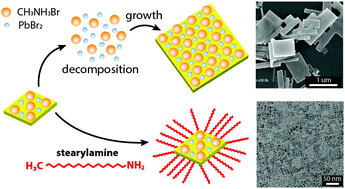
Nanoscale, 2018,10, 1885-1891
https://doi.org/10.1039/C7NR06547G
White light emission in Bi3+/Mn2+ ion co-doped CsPbCl3 perovskite nanocrystals
Taking advantage of the cooperation between the excitonic transition of the CsPbCl3 perovskite NC host and the intrinsic emissions from Bi3+ and Mn2+ ions, white light emission was developed in the codoped CsPbCl3 NCs.
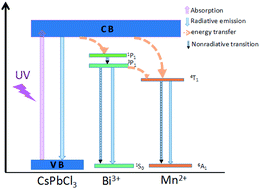
Nanoscale, 2018,10, 1023-1029
https://doi.org/10.1039/C7NR08136G
All-inorganic perovskite nanocrystal assisted extraction of hot electrons and biexcitons from photoexcited CdTe quantum dots
Harvesting of hot electrons and biexcitons from CdTe quantum dots by all-inorganic perovskite nanocrystals is demonstrated through femtosecond transient absorption measurements.
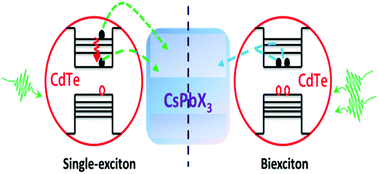
Nanoscale, 2018,10, 639-645
https://doi.org/10.1039/C7NR07830G
Adsorbed carbon nanomaterials for surface and interface-engineered stable rubidium multi-cation perovskite solar cells
Adsorbed carbon nanomaterial based dual electron transport layer ensures more efficient and stable perovskite solar cells.
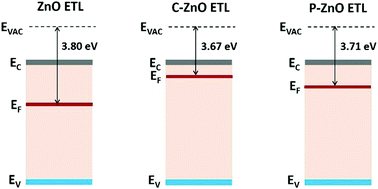
Nanoscale, 2018,10, 773-790
https://doi.org/10.1039/C7NR06812C
Perovskite photodetectors with both visible-infrared dual-mode response and super-narrowband characteristics towards photo-communication encryption application
Photo-communication has attracted great attention because of the rapid development of wireless information transmission technology.
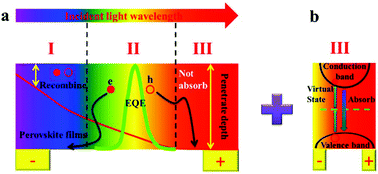
Nanoscale, 2018,10, 359-365
https://doi.org/10.1039/C7NR06193E
Novel inorganic perovskite quantum dots for photocatalysis
Uniform CsPbX3 quantum dots were synthesized via an emulsion fabrication and demulsion method at room temperature. The as-prepared CsPbX3 QDs exhibit high synthetic yield and highly uniform morphology, as well as excellent photocatalytic activity toward the degradation of MO.
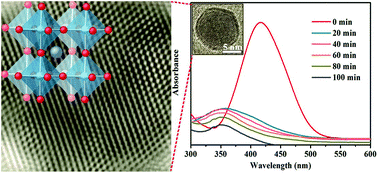
Nanoscale, 2017,9, 12032-12038
https://doi.org/10.1039/C7NR04421F
Reducing hole transporter use and increasing perovskite solar cell stability with dual-role polystyrene microgel particles
Using low-cost sub-micrometer microgel particles in perovskite solar cells reduces expensive conjugated polymer use, increases stability and provides good efficiencies.

Nanoscale, 2017,9, 10126-10137
https://doi.org/10.1039/C7NR02650A
Gold and iodine diffusion in large area perovskite solar cells under illumination
Elemental migration has been observed at the nanoscale in perovskite solar cells after prolonged light exposure under operational conditions.
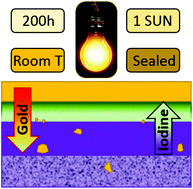
Nanoscale, 2017,9, 4700-4706
https://doi.org/10.1039/C7NR00784A
Perovskite solar cells with a DMSO-treated PEDOT:PSS hole transport layer exhibit higher photovoltaic performance and enhanced durability
The perovskite films with larger grains and increased crystallinity on DMSO-doped PEDOT:PSS result in a 37% boost in the power conversion efficiency(PCE). Moreover, DMSO-doped PEDOT:PSS devices possess enhanced PCE durability over time.
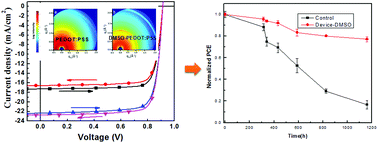
Nanoscale, 2017,9, 4236-4243
https://doi.org/10.1039/C6NR08375G
Efficient perovskite solar cells by combination use of Au nanoparticles and insulating metal oxide
Herein, we demonstrate the enhancement in the performance of perovskite solar cells through the combined use of Au NPs and MgO, both experimentally and theoretically.
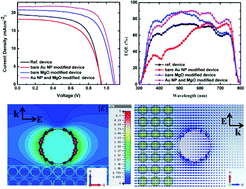
Nanoscale, 2017,9, 2852-2864
https://doi.org/10.1039/C6NR09972F
Effect of the solvent used for fabrication of perovskite films by solvent dropping on performance of perovskite light-emitting diodes
This research confirms that the effect of the solvent in solvent dropping method is to fabricate a uniform perovskite film and to passivate the defect sites of the perovskite crystal films.
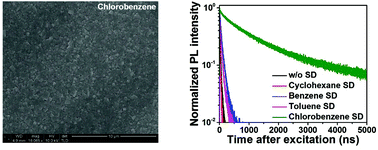
Nanoscale, 2017,9, 2088-2094
https://doi.org/10.1039/C6NR08158D
Bandgap tunable Csx(CH3NH3)1−xPbI3 perovskite nanowires by aqueous solution synthesis for optoelectronic devices
Water as a ‘green’ solvent instead of organic one such as N,N-dimethylformamide (DMF) or dimethyl sulfoxide (DMSO) was utilized to develop an efficient synthetic route to grow various kinds of lead halide perovskite nanowires (NWs) for optoelectronic devices.
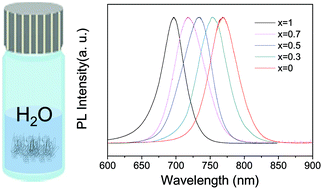
Nanoscale, 2017,9, 1567-1574
https://doi.org/10.1039/C6NR06636D
Ultrafast carrier dynamics in bimetallic nanostructure-enhanced methylammonium lead bromide perovskites
We investigate the interaction of bimetallic plasmonic nanostructures with methylammonium tribromide perovskites and probe the effects on charge separation and injection with transient absorption spectroscopy and time-resolved photoluminescence.

Nanoscale, 2017,9, 1475-1483
https://doi.org/10.1039/C6NR08347A
Versatile plasmonic-effects at the interface of inverted perovskite solar cells
Plasmonic gold nanoislands (Au NIs) harvest light at the interface of NiO and perovskite in perovskite solar cells.
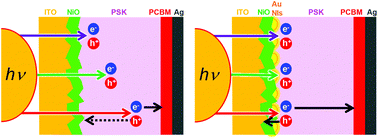
Nanoscale, 2017,9, 1229-1236
https://doi.org/10.1039/C6NR06741G
About this collection
Professor Zhiqun Lin (Georgia Institute of Technology, USA), Nanoscale Advisory Board Member, introduces his Editor’s Choice collection.
“The past several years have been witness to an unprecedented advance in perovskite-based materials and devices. This new class of materials possess a set of superior optoelectronic properties, including tuneable direct band gaps, large absorption coefficient, high ambipolar mobility, long carrier diffusion lengths, small exciton binding energy, and high defect tolerance. In this context, it is pertinent to compile this themed issue centring on recent rapid development in the field of perovskite-based materials and devices for the solar energy conversion research community. To this end, we have collected an array of high-quality research articles and reviews recently published in Nanoscale. We hope that the readers find this themed collection informative and useful.”